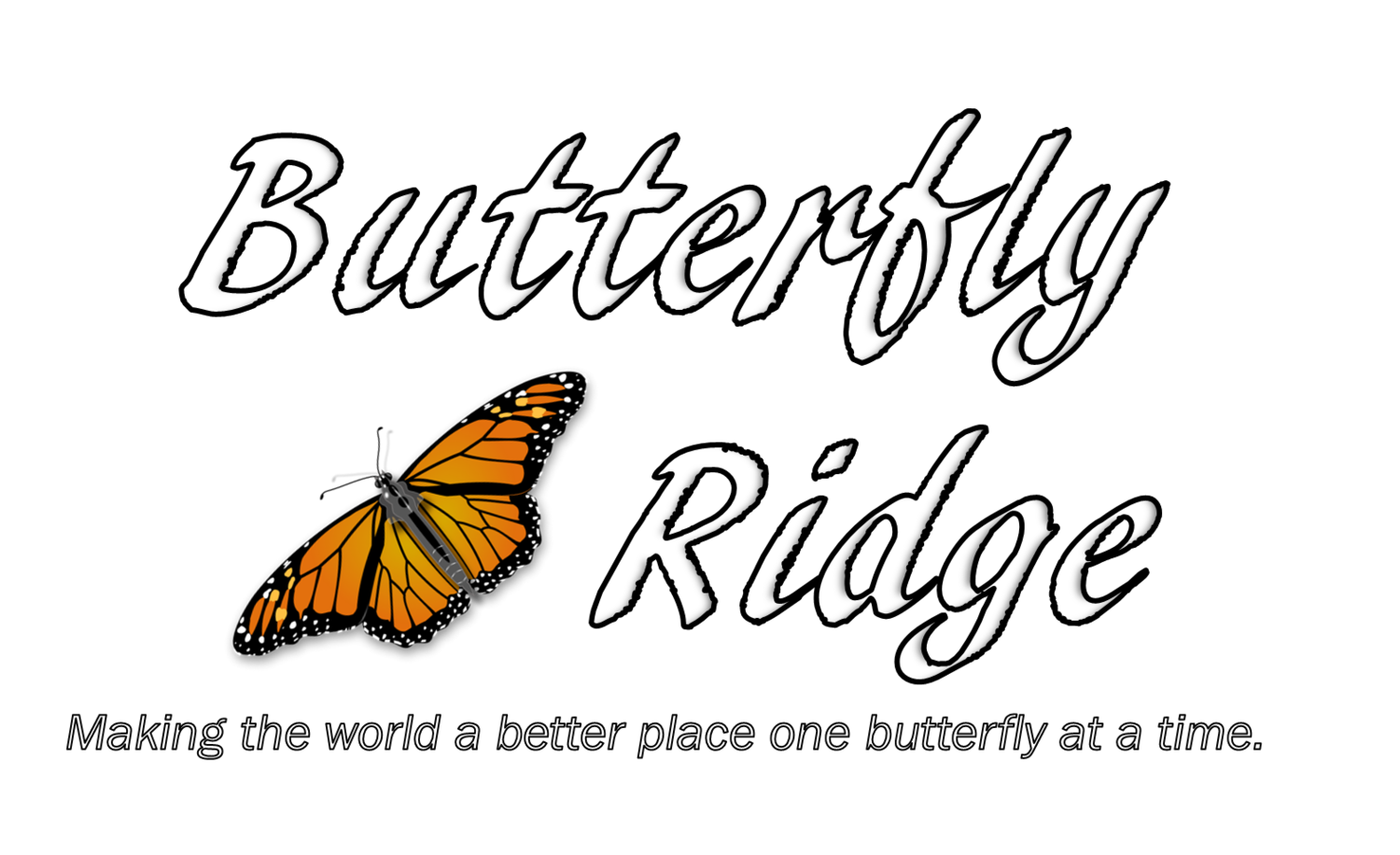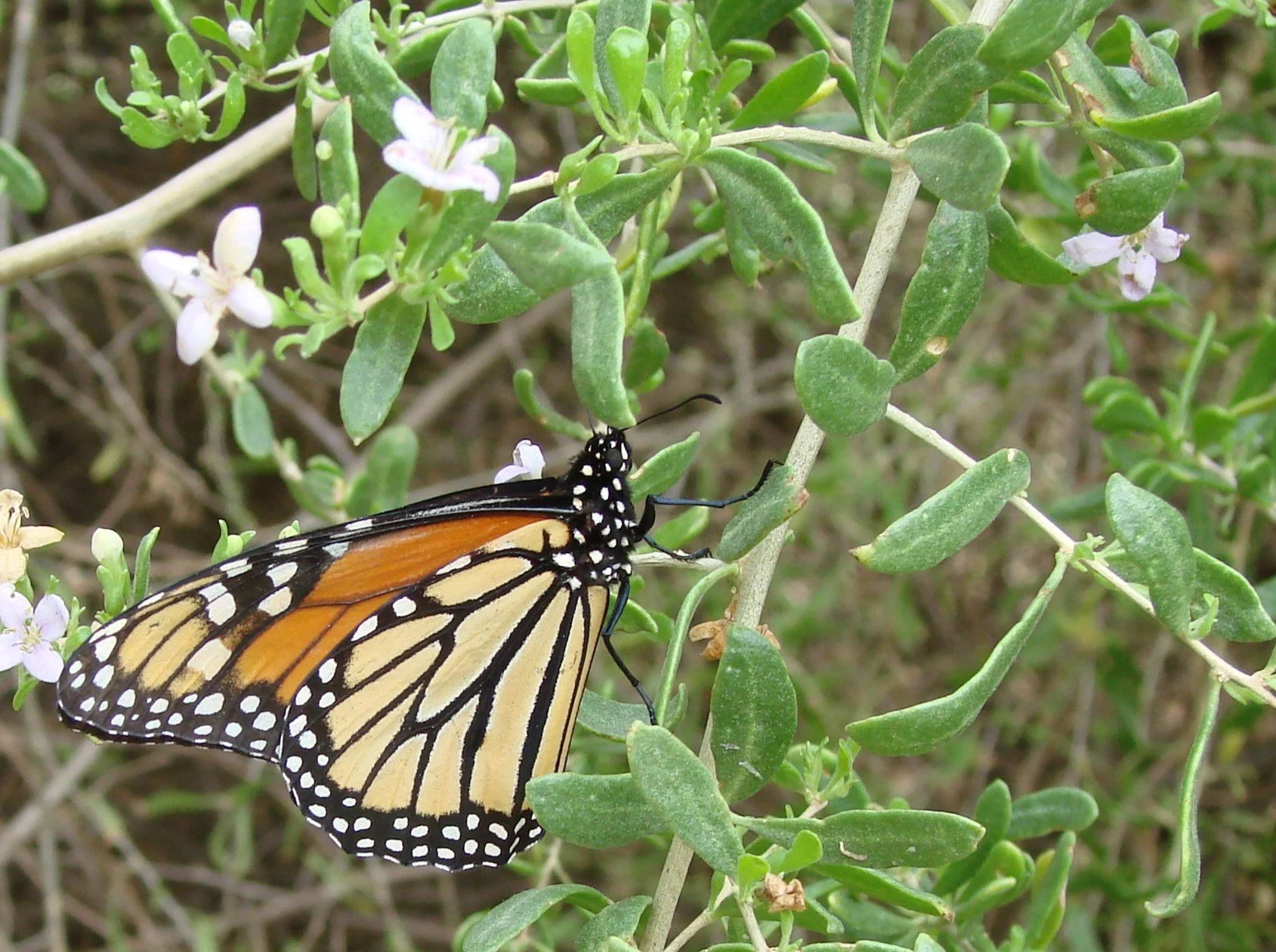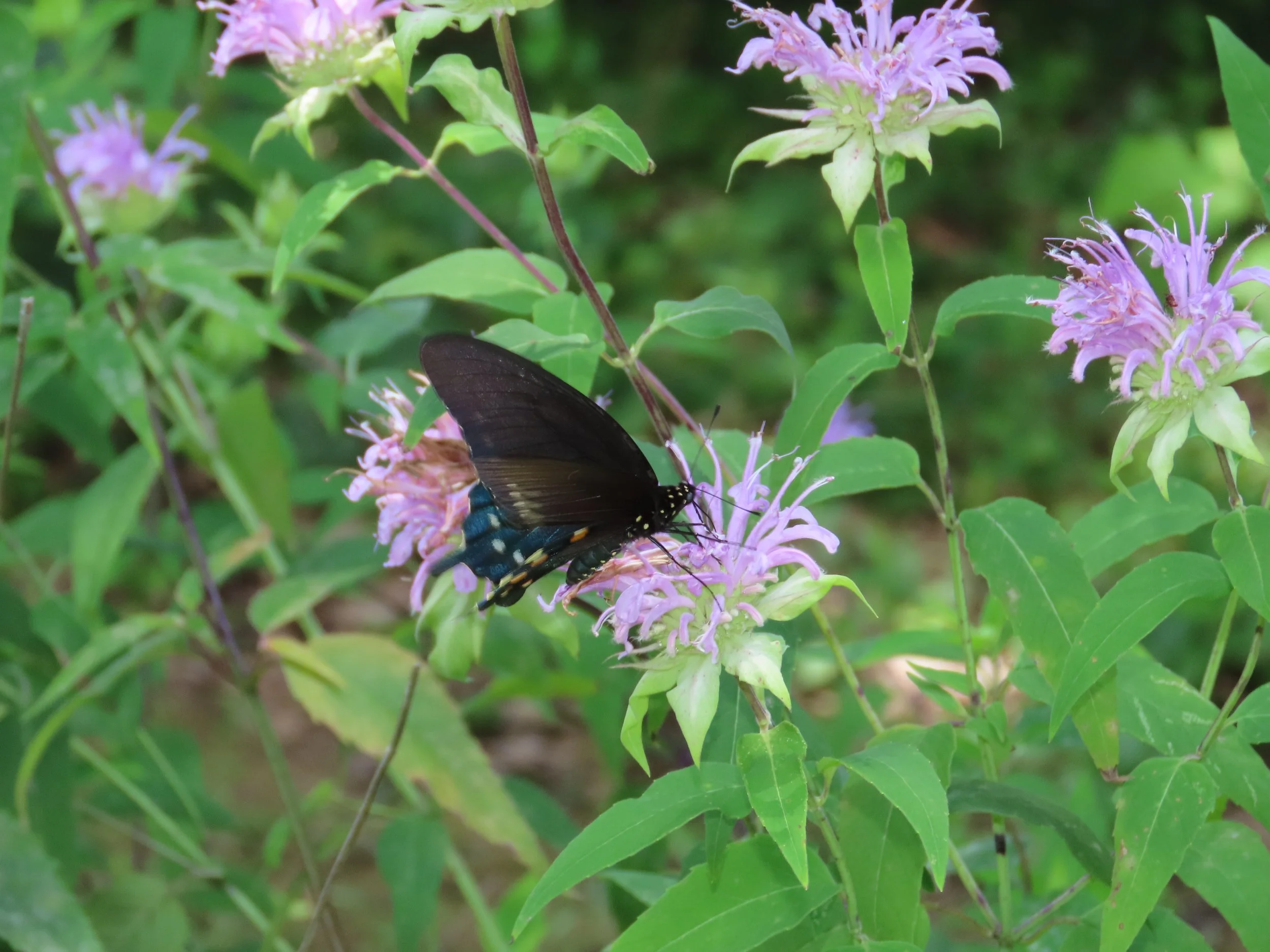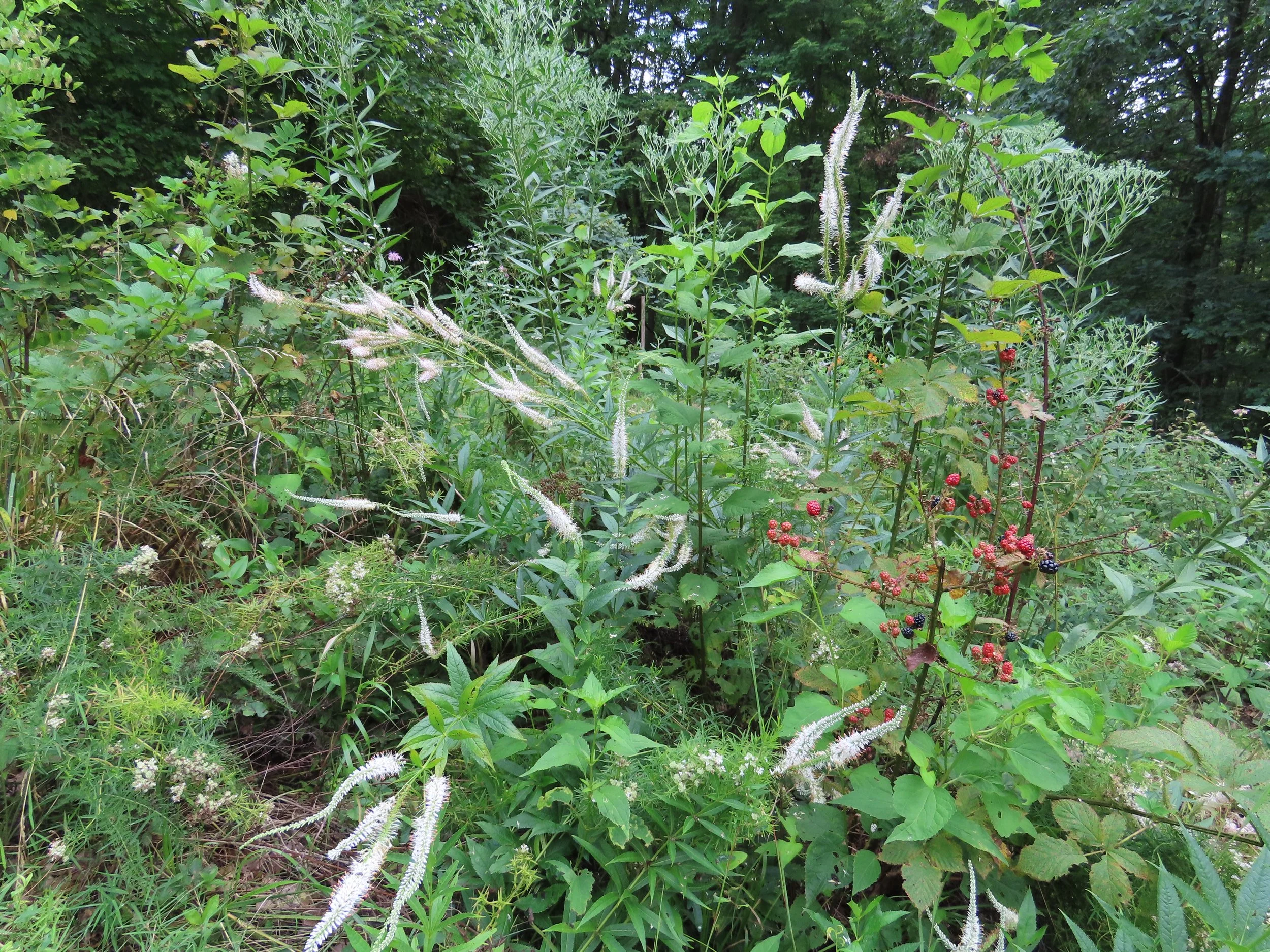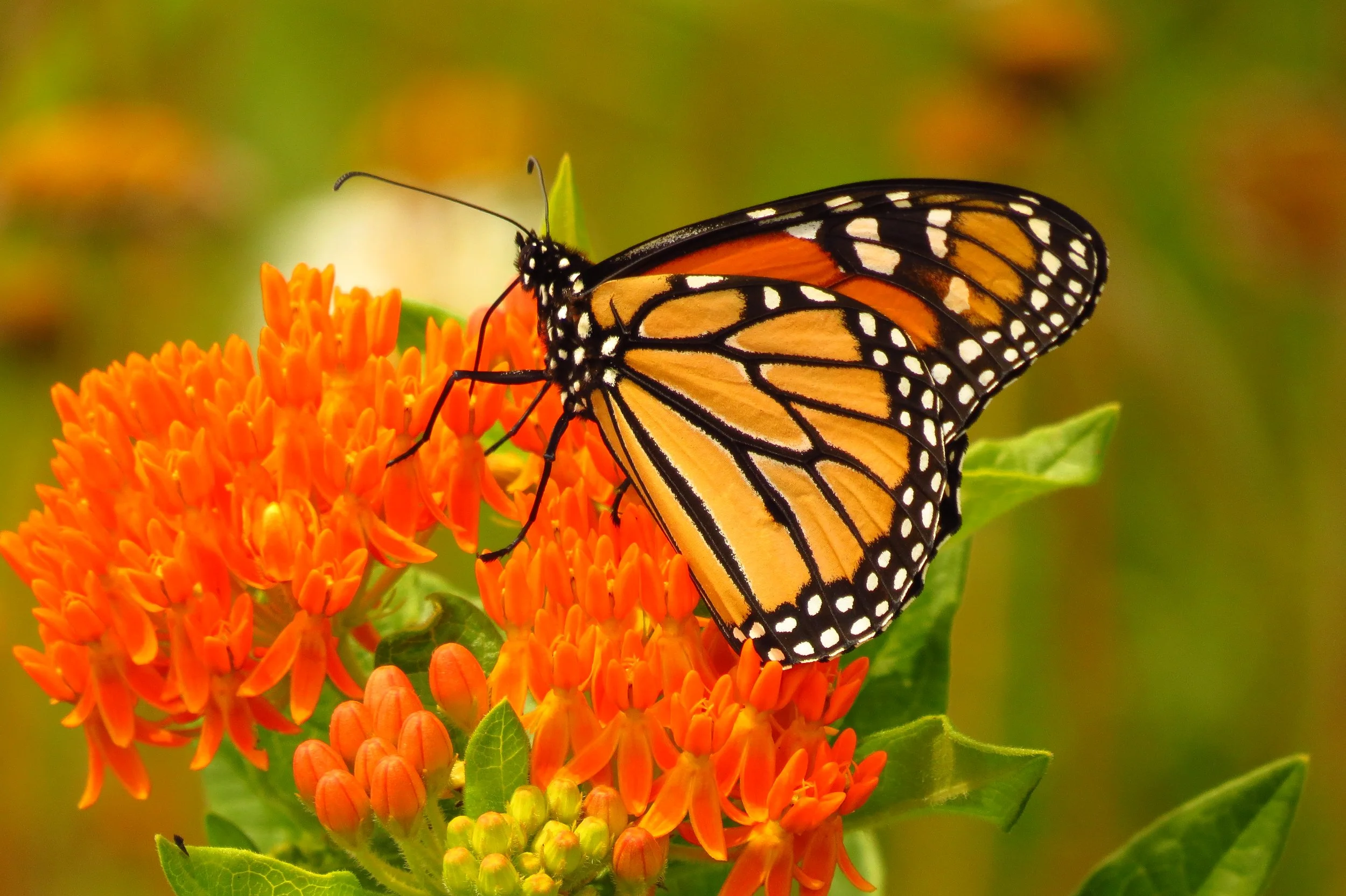Unpacking the recent monarch population numbers.
/Overwintering monarch population data
The size estimates for the overwintering population of monarch butterflies in central Mexico were recently announced. The results indicate roughly a sixty percent decline in the size of this winter’s overwintering population as compared to last year.
So, what can account for such a drastic drop in population size? Experts believe drought during the autumn of 2023 from the southern Great Plains south through Mexico had a lot to do with it. I observed this drought first-hand with my visit to south Texas in November. The number of available blooms was noticeably lower at several of the sites I normally visit. And while during my visit the area experienced four straight days of rain, keep in mind the primary flow of the migration had passed through long before.
Something to keep in mind, while a sixty-percent decline in the population is notable, it is by no stretch unheard-of. Six times in the last twenty-five years the population experienced better than a fifty percent decline. And within a few years, the population had not only bounced back, but had bounced back to a stronger position than pre-crash levels. Monarchs are resilient. I have no reason to doubt their ability to bounce back from this decline, just as they have done repeatedly throughout history.
monarch tagged by the southwest monarch study
Now we can fully expect, in the aftermath of this report, to begin hearing the e-words; endangered and extinct. Keep in mind that monarchs are neither endangered nor extinct. In the United States, to be endangered, the US Fish and Wildlife Service must declare you as such under the rules of the Endangered Species Act; being endangered is not simply “just a state of mind”, as one person tried to tell me in the past year. Fish and Wildlife has not done so, although reports are that they will be revisiting listing the monarch later this year, a decision made prior to the release of this data.
The entire point of listing a species as threatened or endangered is to provide that species with extra help from a habitat protection perspective. It is my opinion that monarchs should NOT be listed via the ESA. Let me offer four reasons as to why.
There are already countless organizations helping monarchs. There is no less than four tagging programs around the US to help monitor monarch populations. There is an abundance of conservation groups educating the public on the importance of monarchs and how to conserve them. There is no shortage of groups, including Wild Ones and Polygonia Foundation, who are distributing milkweed seed to concerned property owners. I am not sure what help the ESA could provide that monarchs are not already receiving.
The key component to the monarch butterfly population decline is habitat loss. That habitat loss is largely happening on the United States side of the border. One key component of that habitat loss is agriculture and the use of herbicide-resistant (Round-up Ready) crops. When I was a kid (fifty plus years ago), if you wanted to find milkweed you went, among other places, to the edge of farm fields. Common Milkweed loves disturbed ground, and you don’t get much more disturbed than ag fields. With the invention of Round-Up Ready crops, farmers can spray herbicide directly on the crops, thus eliminating colonizers like milkweed from even getting started. I am not even sure that farmers have access to non-herbicide-resistant seed at this point in the game. Do you honestly believe that Fish and Wildlife, as part of an ESA monarch listing, will ban Round-Up Ready crops?! I don’t!
Another place that we would find milkweed in my youth pretty reliably was along roadsides. Every time Uncle Fred drove off the road into the ditch, it would disturb the ground and create new habitat for milkweed to exploit. If you have not noticed, our various state departments of transportation now mow roadside to within an inch of their lives. When I lived in Indiana I would tease people that I could drive a golf ball from Muncie to Richmond without going in the rough; not because I was a great golfer, but because there was no rough. Indiana roadsides are like putting greens. Milkweed does not stand a chance to get started. Do you honestly believe that Fish and Wildlife, as part of an ESA monarch listing, will ban roadside mowing between the months of June and October in the Midwest to protect milkweed, and thus monarch, populations?! I don’t!
We are all very familiar with urban sprawl. In fact, some of you reading this may be co-conspirators in said sprawl. And every year natural habitat is wiped out and replaced with asphalt, concrete, 2 by 4’s, and a hideous collection of exotic invasive shrubs that the landscaping industry seems dead-set on shoving down our yard’s throats. Do you honestly believe that Fish and Wildlife, as part of an ESA monarch listing, will mandate an acre of land be set aside for conservation for every acre developed for residential, commercial, and industrial purposes?! I don’t!
The other e-word, extinction, is going to be thrown around as well, I promise. Monarchs are not going extinct. How do I know? For monarchs to go extinct, every monarch in the world must die. The United States is not the world (blasphemy I realize)! Do you honestly believe that every monarch in the United States, central America, the Caribbean, Hawaii, Australia, New Zealand, is going to die?
“B . . . b … b … but the migration might go extinct!” To which I respond, “so what.” Yes, everybody enjoys seeing multitudes of monarchs roosting in their trees or nectaring in their fields. Hell, the migration plays a major role culturally in central Mexico. However, if it is the butterfly species that we are truly concerned about, then it does not matter whether they migrate. If climate change causes monarchs to not make it beyond the Mexican border, stopping instead at the square miles of crucita and lantana plantings in south Texas and Arizona, then what is the problem? All of the rest of us are having to adjust thanks to climate change; monarchs are certainly capable of doing that as well.
You are also going to hear about the evils of captive rearing and planting of tropical milkweed is the cause for the decline in the monarch population. If you believe that, then you probably believe that Fish and Wildlife will actually do all of those things above that I said they won’t do! Despite the best efforts to convince you otherwise by certain scientists and environmental groups, captive rearing is not destroying the monarch population. Every year Monarch Watch and the Southwest Monarch Study document captive reared monarchs at overwintering sites.
Regarding Tropical Milkweed, read the original research from several years back. Yes, in states that have high humidity and winter temperatures (in other words the Gulf Coast), tropical milkweed can harbor Oe, a parasite to monarchs. It has not been proven via field research to be a problem in other parts of the country.
You may also hear that Tropical Milkweed is causing monarchs to rethink migration, instead choosing to hang out in Ohio, or Indiana, or Kansas in the fall to take advantage of all the wonderful exotic milkweed. Not true again! Arizona has MANY native evergreen milkweeds, but somehow most southwestern monarchs still choose to migrate. What, in fact, causes monarchs to want to hang out in Ohio, Indiana, and Kansas for longer than they should is unseasonably warm autumn temperatures in those areas. We have observed this at Butterfly Ridge, and I promise we have no tropical milkweed planted!
There is going to be all kinds of misinformation and the accompanying fundraising schemes now that this monarch decline has been reported. Don’t fall for it. The best way to help monarchs is education, education, education, and doing what you can to make your property butterfly friendly. Reduce the lawn and add milkweed and other native plants. Collectively, we can make a bigger difference than any government entity.
